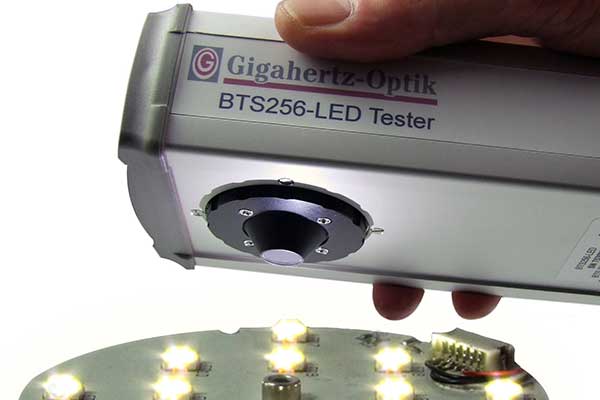
Luminous Flux and Color Measurement of Board Mounted LEDs
Manufacturers offer LEDs sorted or ‘binned’ according to their Correlated Color Temperatures (CCT), lumen output, and forward voltage parameters. For example, standards such as ANSI C78.377-2017 [1] specify the range of chromaticity values recommended for general lighting in terms of ‘bins’ that are defined by a series of chromaticity quadrangles plotted along the black body locus in the CIE 1931 or CIE 1976 color space.
Need for Quality Control in LED Production
Although this pre-sorting limits tolerance ranges, it does not release the user from metrological quality control. This is mainly due to the fact that the operating parameters used for LED binning do not match those of the end application.
Manufacturers classically specify bins for their devices based on measurements using ~20 ms current pulse operation and with a junction temperature of 25°C. These days methods as described in LM-92-22 "Optical and Electrical Measurement of Ultraviolet LEDs" [2] like
- Continuous Pulse Measurement Techniqe for LED measurement
- Differential Continuous Pulse Method for LED measurement
- Mean Differential Continuous Pulse (M-DCP) Method for LED measurement
- DC Method for LED measurement
- Continuous Pulse Time Resolved (CPT) Method for LED measurement
are known and widely used. Therefore, in addition to the particular current drive conditions employed, the thermal design of the LED carrier board and associated heatsink can significantly influence the optical performance of any assembled LED module or product. Also timing issues and jitter considerations are important and are all part of the measurement uncertainty evaluation.
Measurement Systems for on Board LED Testing
The two possible measures of the light intensity of assembled LEDs are luminous flux (lm) and luminous intensity (cd). The measurement of the luminous flux is preferable to the measurement of the luminous intensity, since no particular alignment of the measuring device with the beam of the LED is necessary. The BTS256-LED tester incorporates an integrating sphere in conjunction with its BiTecSensor technology enabling the direct measurement of the luminous flux, spectral power distribution, CCT and color rendering (CIE CRI and IES TM-30-15) of in-situ LEDs. The cone-shaped measuring aperture of the integrating sphere is simply positioned over the assembled LED for measurement.
The measurement of UV LEDs, VIS LEDs and NIR LEDs on board for quality control can be perfectly done with our measurement equipment. This of course ISO 17025 traceable calibrated.
References
[1] Specifications for the Chromaticity of Solid State Lighting Products, ANSI C78.377-2017
[2] LM-92-22: Optical and Electrical Measurement of Ultraviolet LEDs